
The Impact of Temperature on Air Compressor Efficiency
November 6, 2024
How to Choose an Air Compressor for Your Business
November 20, 2024CFM vs. PSI: What You Need to Know to Size an Air Compressor
Kaishan USA | November 13, 2024| Uncategorized
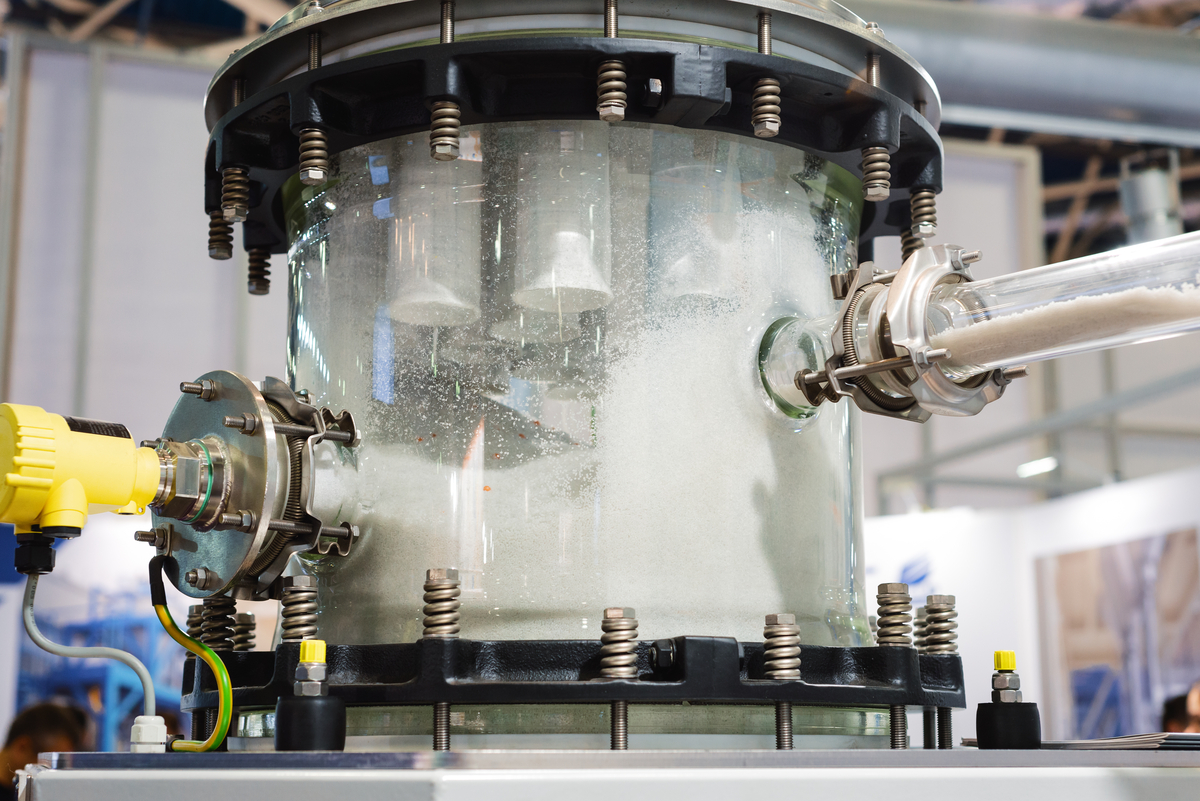
Bulk conveying of powders, pellets or resins, requires a lot of flow (CFM), but not that much pressure (or PSIG).
The questions compressed air professionals hear most frequently concern the core measurements used to describe the performance of compressed air systems:
- Can you give me an air compressor CFM calculator?
- How do I do a CFM to PSI conversion?
- Where can I get high CFM air compressors?
- What is the PSI for pneumatic tools?
- Can you give me an air compressor CFM guide?
Those are just a few of the questions that arise about key metrics like CFM (or flow) and PSIG (or pressure). And when you throw in HP (for horsepower), all too many people are hopelessly lost.
But those numbers are critical when properly selecting, sizing and operating a compressed air system. To help you better understand how they all affect your compressor, we’ll start with a few quick answers to those questions:
- No simple calculator. There’s no easy way to give you an air compressor CFM calculator because so much depends on getting a complete picture of what’s happening in your facility.
- No quick conversion. Because they measure two different things, there really isn’t a CFM to PSI conversion.
- Most compressors can give you high CFM. However, the total CFM performance any machine can deliver will depend on the pressure you need.
- PSI for air tools. What is the PSI for pneumatic tools? Generally, pneumatic tools need a lot of pressure (PSIG), but not a lot of flow. We’ll explain below.
- CFM guide. Can you give me an air compressor CFM guide? We’ll provide some help below.
Much of the problem arises because most people don’t really understand the terms and use them interchangeably. The critical point is that you need at least two measurements to plan your compressed air system. They’re not interchangeable. And you can’t convert one measure to another.
So, we’ll start by giving you a complete understanding of all the terms involved in compressed air. Let’s begin with flow (or CFM).
Flow (or CFM)
CFM describes the amount of air you’re consuming. The abbreviation stands for cubic feet per minute, specifying the amount of compressed air that flows through your system. You may also hear other measurements of flow used internationally, like cubic meters per minute (m3/min), liters per minute (L/min) and liters per second (L/s). See our calculator to convert among the different units of measure.
CFM is a measure of the amount or volume of compressed air your compressor is producing. Most pieces of equipment typically specify the CFM they need. Some applications require a lot of flow.
Equipment flow requirements typically are listed as CFM, ACFM, SCFM, or ICM. They are not all the same and can vary depending on the installation site. For more information on the different ways to describe flow, see our calculator to convert among the different units of measure.

Wastewater treatment needs higher air volumes (or CFM) but little pressure to generate air bubbles during the aeration stage.
Applications That Need High Flow (CFM)
Sometimes, you’re just blowing on things, so you need more air, but relatively low pressures will suffice. Applications include:
- Wastewater treatment, [Link to: https://kaishanusa.com/wastewater-treatment/] where the emphasis is on aeration
- Cooling, cleaning or simply blowing air over a tool or piece of equipment to remove heat or debris
- Blowing water or sawdust off a surface
- Bulk conveying of powders, pellets or resins, where pressure is not as much of a factor
But flow is not the only consideration. You also need to know the pressure required to operate individual tools.
Pressure (or PSIG)
Pressure (or PSIG) is the driver behind the flow you use to service your applications. PSIG stands for pounds per square inch gauge and measures the system pressure, the force your end-use application needs to perform a task. Having more PSIG available enables you to do more work with less effort. (Pressure can be rated in PSIG for pounds per square inch gauge or PSIA, pounds per square inch absolute.)
The PSI for pneumatic tools, for example, is usually between 80 and 90 PSIG of pressure. Air tools require pressure to deliver the torque or other power needed but not much flow.
In wastewater treatment, on the other hand, you need flow but not much pressure. You don’t need a lot of PSIG to make bubbles. However, blowing glass bottles requires pressure (to fill a mold), but minimal flow.
Once again, you will hear other measurements of pressure used internationally, like bar and kilopascals (kPa). See our calculator to convert among the different units of measure.
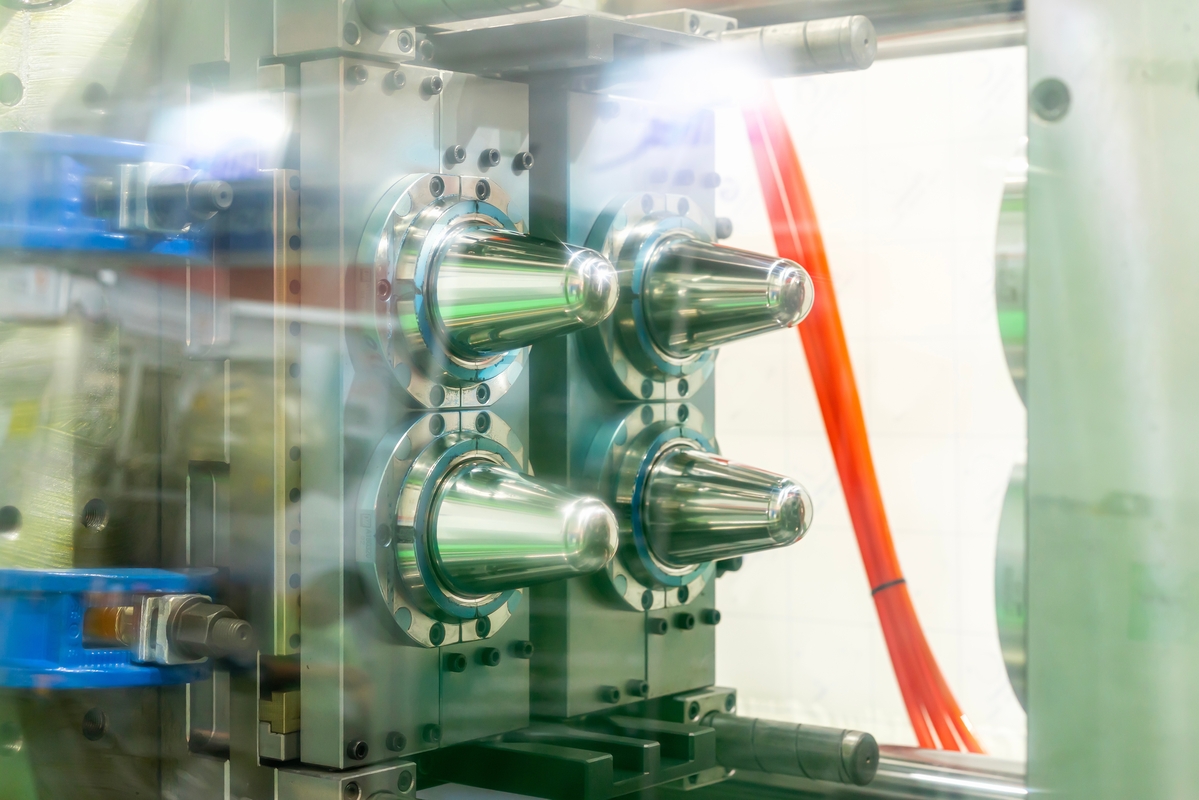
Injection molding equipment needs a high PSIG but not much CFM or flow.
Applications That Need a Standard Range of Air Pressure
As noted, some applications need pressure but not much flow. They include:
- Pneumatics, like nail guns or tire inflators
- Tool and die machines
- Injection molding equipment
- Impact wrenches in auto body shops
- Heavy-duty machinery like presses and other large pieces of industrial equipment
- Robotic arms
- Cutting tools and routers
A few applications, like sandblasting, require significant amounts of pressure (100 PSIG) and flow (up to 300 CFM, depending on nozzle size) because you are moving a lot of weight and volume simultaneously. For more on the specific needs of sandblasting, read our blog post, “Best Screw Compressors for Sandblasting.”
PSI is really about the energy you need to accomplish individual tasks. How much work needs to be done? How strong does the compressed air flow have to be?
Pressures of 100 to 125 PSIG are relatively common. But the higher the pressure, the more energy you expend.
That’s why you don’t want to run your whole plant at 200 PSIG when you just have one or two applications that need that much pressure. If you do that in a large plant requiring thousands of CFM, you’ll waste a lot of energy. You may even need a much larger machine.
It’s much better to have a booster or dedicated compressor if you have only one or two high-pressure end uses.
CFM to PSI Conversion?
Because they measure two different characteristics of your compressed air system, there isn’t a way to do CFM to PSI conversion.
The real challenge for compressed air systems is providing both types of needs in the same operation, perhaps even with the same machine. The chart below shows how flow (CFM) and pressure (PSIG) can vary depending on the task.
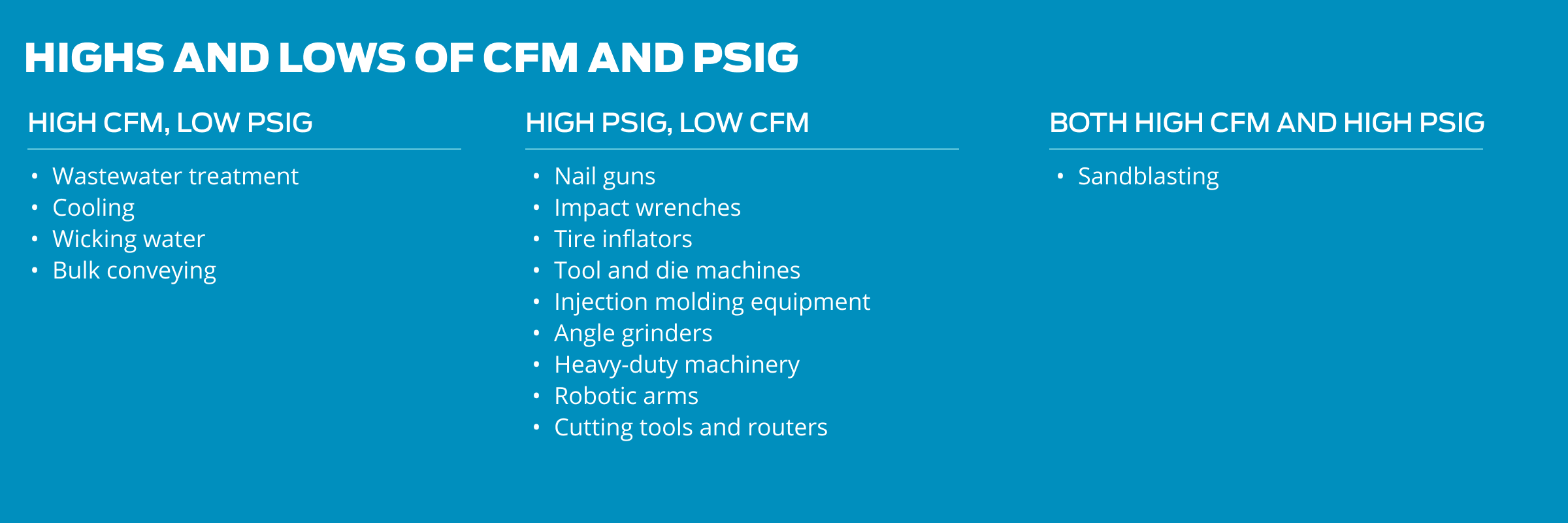

Sandblasting is the ultimate power hog, requiring high pressure (PSIG) and high CFM air compressors.
Calculating how much pressure and flow you need for your plant requires that you consider all your uses. Compiling what we call a demand profile.
Factor In Your Uses
You’ll want to get a complete profile of your end uses to calculate the pressure and flow you need. A common mistake is to overestimate how much flow you need.
Suppose you have ten tools that all require 5 CFM of flow. You may think that means you need 50 CFM of flow. But you probably don’t.
Here’s why: the ten tools usually do not work at once. Some may be in continuous use, but most are probably “intermittent.” With each tool, you’ll want to ask if you are using it continuously, like sanding a part, or only sporadically, as you might for tightening lug nuts on tires. And which tools are running simultaneously?
So, rather than needing the entire 50 CFM mentioned above, you only need 10 CFM. That’s called the “use factor.”
You’ll want to weigh those different choices in calculating your flow and pressure needs:
- CFM is additive, so you’ll add all the continuous uses and allow for the intermittent ones. If you have two tools drawing 5 CFM of flow, you need 10 CFM to cover those tools. Then, you have five other tools, each also requiring 5 CFM of flow, that only operate 20% of the time. So. you’ll only add another 5 CFM (5 tools, each 5 CFM, time 20%). And your total is 10 + 5 or 15 CFM. A formula might look like this:
[Tools #1 CFM + Tool #2 CFM + … Tool #n CFM] x [Use factor %) = Additive CFM - Pressure is not additive but set by the highest use. Let’s say you have ten tools needing 80 PSIG and one drawing 90 PSIG. That means you’ll need 90 PSIG of pressure (allowing for any pressure loss from the compressor to the point of use).
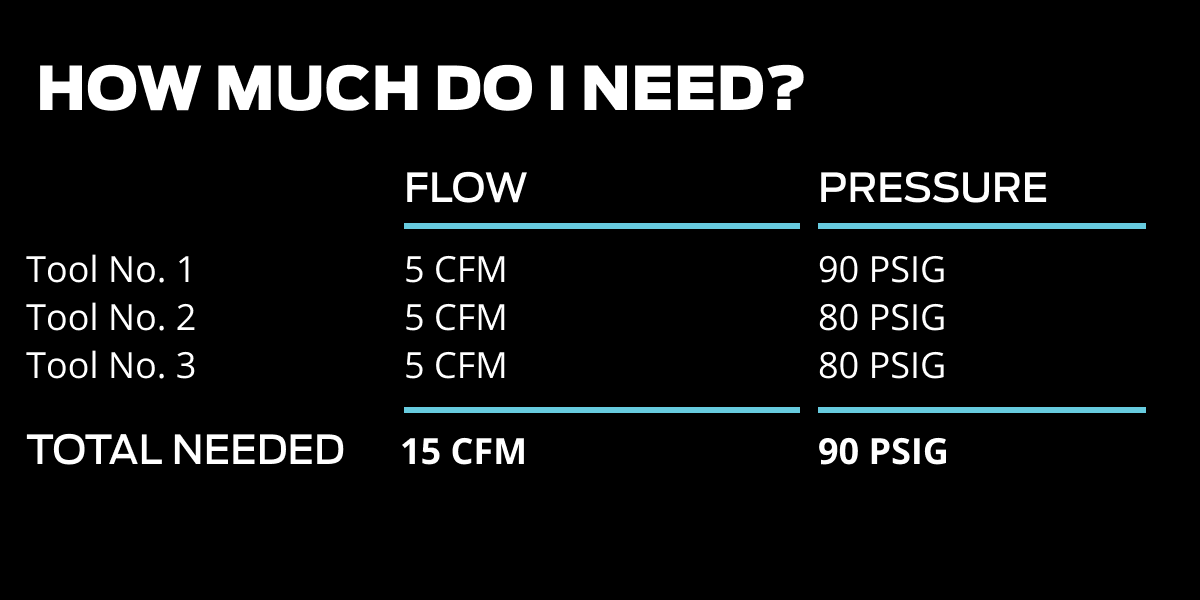
One added thought: for low-pressure applications, it may be more cost-effective to use a dedicated compressor like our KRSL low-pressure series rotary screw air compressor, designed to handle applications that need 25-45 PSIG. It is ideal for tasks like bulk conveying.
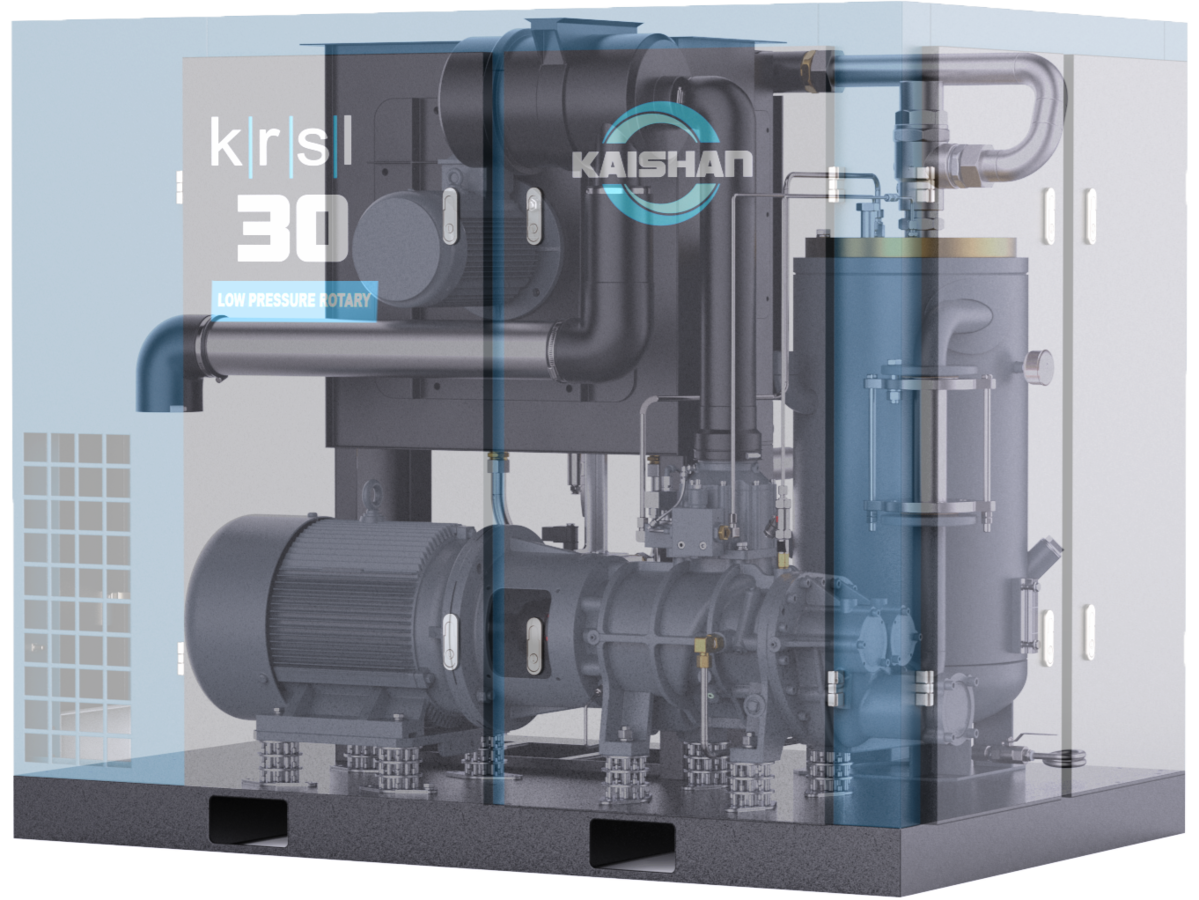
Our KRSL low-pressure rotary screw air compressor is perfect for applications like bulk conveying that require a lot of flow but only need 25-45 PSIG.
The Relationship Between CFM and PSIG
Most air compressors are designed to deliver a fixed amount of output. For example, 100 CFM at 100 PSIG. You do have some flexibility. But it comes at a cost, reflecting the relationship between flow and pressure: when you increase the pressure, you decrease the flow. And vice versa.
There’s another way the inverse relationship between CFM and PSIG causes confusion. If they are not getting enough pressure at one of their critical applications, for example, most people naturally want to go back to their air compressor and jack up the pressure.
But that rarely works because it’s almost always the flow that’s the problem, not the pressure. So, by increasing the pressure, you reduce the flow, making the situation worse.
Ideally, if your compressor is adjusted to deliver 85 PSIG, the pressure throughout your system is at that level. It’s the flow that is reduced as you deliver air to end-use tools (or as your system leaks). So, the problem is not with the system pressure, but the flow.
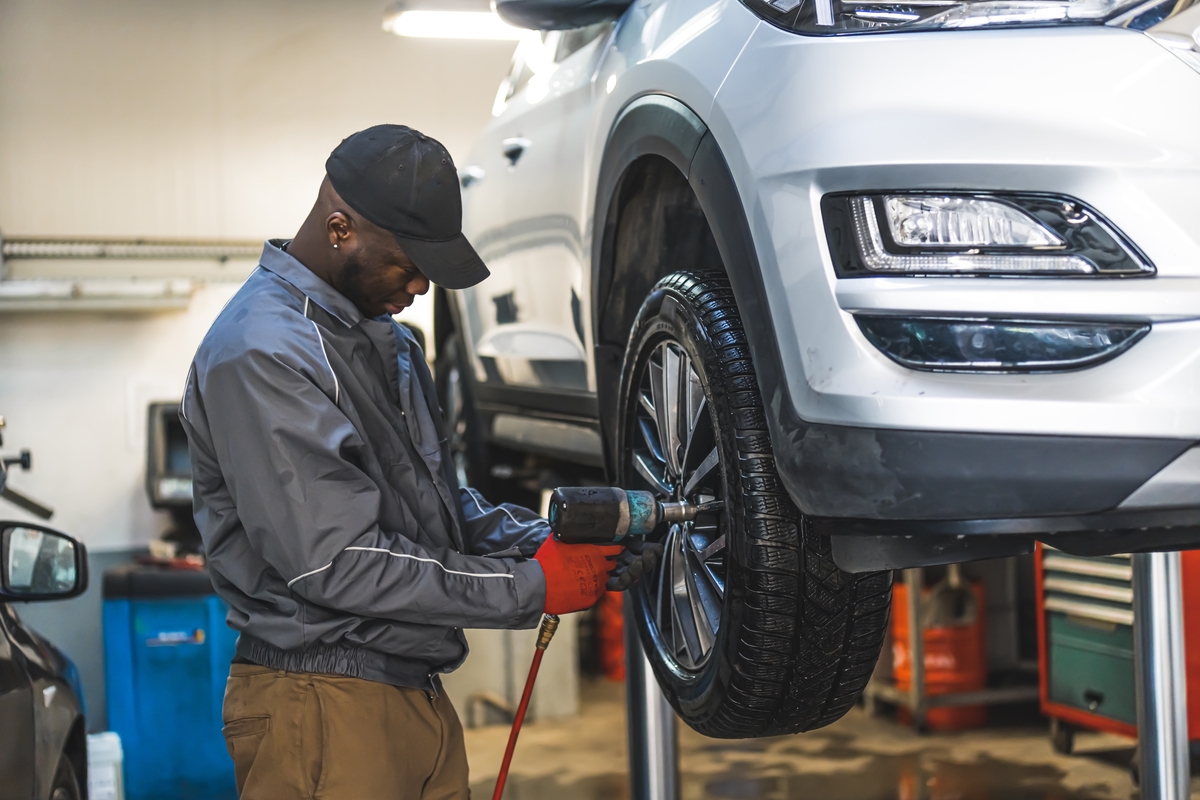
Your mechanic may say they are not getting enough pressure to power their impact wrench. But boosting the pressure at the compressor probably won’t work. It most likely will result in even lower pressure to their tool.
Let’s say your system is set at 85 PSIG, and you bump it up to 90, hoping to get that extra pressure you need. Then, because of that inverse relationship, you’ll have less compressed air flow, and it will be at a higher pressure. So, all those regulators you set to decrease the 85 PSIG to 80 will now have to reduce the pressure by an additional 5 PSIG. Costing you even more flow.
And then there’s the leaks. All those tiny gaps leaking air throughout your system are under more pressure. They begin to leak even more air, reducing flow further and adding to your energy use.
The result is less compressed air volume (and lower pressure) at the end of the line. It’s called artificial demand.
Your maintenance team will likely not believe it, but the best way to get more pressure at the end of the line is often to lower the pressure at the air compressor. That boosts CFM and delivers more air flow to the tool. And it’s at the desired pressure.
And Don’t Forget Horsepower (HP)
Another critical determinant of system capacity is the compressor horsepower (HP), a measure of an air compressor’s motor performance. Specifically, the power output of the motor that drives a high-CFM air compressor. The more horsepower, the more capacity the compressor has to deliver compressed air at the required CFM and PSIG. You need enough horsepower (HP) to generate all that energy.
In general, adding compressors with more horsepower to your system increases its power, allowing it to produce more CFM. That doesn’t mean that you can add a larger horsepower motor to an existing compressor to get more CFM. It doesn’t work that way.
Minding Your PSIGs and CFMs
Unless you have a compressed air professional on staff, you probably need help on occasion with specifying, operating, servicing or troubleshooting your air compressor and your compressed air system. We can help.
We are strongly supported by a nationwide network of independent distributors, who are factory-trained air compression experts. They can provide on-site help and consultation as needed and have staff members who are skilled in servicing your air compressor system without a problem.
Key Takeaways
- There’s no easy way to give you a simple air compressor CFM calculator because so much depends on getting the complete picture of what’s happening in your facility.
- Because they measure two different things, there really isn’t a CFM to PSI conversion.
- Most equipment today will be a high CFM air compressor. However, the total CFM performance of any machine will depend on the pressure you need.
- The required PSI for pneumatic tools is generally high, but they don’t need a lot of flow.
- The best air compressor CFM guide is that CFM (or flow) describes the amount of air you’re consuming, and PSIG measures the system pressure, the force your end-use application needs to perform a task.
Let Us Help
Understanding key terms like CFM and PSIG is critical to operating your compressed air system and all the processes that rely on that system. If you need more information on these essential measurement tools, get in touch with the experts at Kaishan. Contact us today.
Random stat or
customer quote
textXXtext
text

